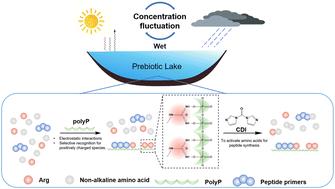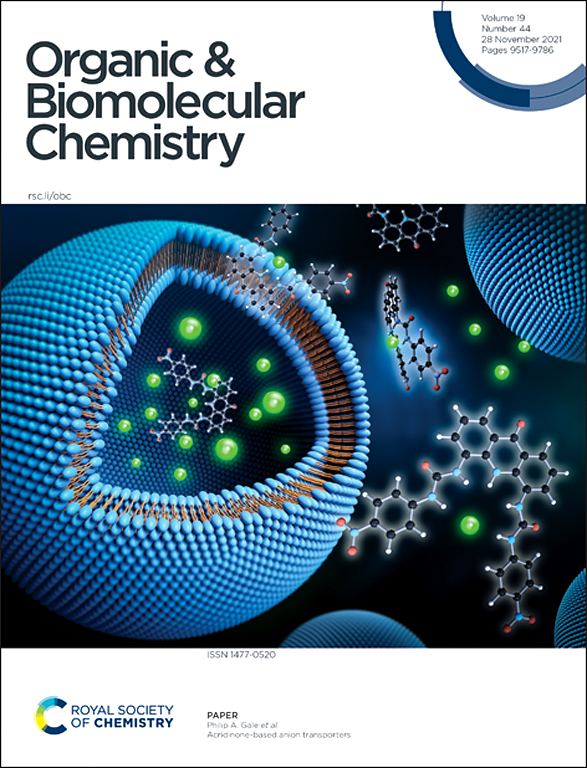由多磷酸盐和肽启动子介导的益生元模板定向肽形成。
IF 2.7
3区 化学
Q1 CHEMISTRY, ORGANIC
引用次数: 0
摘要
矿物质作为不溶性无机支架在益生元环境中促进分子自组装的作用早已被认识到。然而,目前尚不清楚可溶性无机支架分子,如聚磷酸盐,是否也具有驱动小分子组装的能力。本研究以羰基二咪唑(CDI)作为化学活化剂与聚磷酸盐(polyP)结合,研究碱性氨基酸精氨酸(Arg, R)的聚合行为。我们发现polyP可以作为模板,通过静电相互作用引导Arg肽的形成。阳离子短肽,特别是RRR和RER,可以作为引物促进含精氨酸肽的形成。以15n4标记的l -精氨酸为示踪剂的手性竞争实验表明,阳离子短肽具有内在的同手性偏好,可被polyP通过协同增强效应放大。我们的发现为富精氨酸肽的形成机制和同手性的起源提供了新的见解。本文章由计算机程序翻译,如有差异,请以英文原文为准。

Prebiotic template-directed peptide formation mediated by polyphosphates and peptide promoters
Minerals have long been recognized for their role in promoting molecular self-assembly in prebiotic environments by serving as insoluble inorganic scaffolds. However, it remains unclear whether soluble inorganic scaffold molecules, such as polyphosphates, also possess the ability to drive the assembly of small molecules. In this study, carbonyldiimidazole (CDI) was used as a chemical activator in combination with polyphosphates (polyP) to investigate the polymerization behavior of the alkaline amino acid arginine (Arg, R). We found that polyP can act as templates to guide the formation of Arg peptides through electrostatic interactions. Cationic short peptides, specifically RRR and RER, can serve as primers to promote the formation of Arg-containing peptides. Chiral competition experiments using 15N4-labeled l-Arg as a tracer have shown that cationic short peptides possess an intrinsic preference for homochirality, which can be amplified by polyP through a synergistic enhancement effect. Our findings provide novel insights into the formation mechanism of Arg-rich peptides and the origin of homochirality.
求助全文
通过发布文献求助,成功后即可免费获取论文全文。
去求助
来源期刊

Organic & Biomolecular Chemistry
化学-有机化学
CiteScore
5.50
自引率
9.40%
发文量
1056
审稿时长
1.3 months
期刊介绍:
Organic & Biomolecular Chemistry is an international journal using integrated research in chemistry-organic chemistry. Founded in 2003 by the Royal Society of Chemistry, the journal is published in Semimonthly issues and has been indexed by SCIE, a leading international database. The journal focuses on the key research and cutting-edge progress in the field of chemistry-organic chemistry, publishes and reports the research results in this field in a timely manner, and is committed to becoming a window and platform for rapid academic exchanges among peers in this field. The journal's impact factor in 2023 is 2.9, and its CiteScore is 5.5.
 求助内容:
求助内容: 应助结果提醒方式:
应助结果提醒方式:


